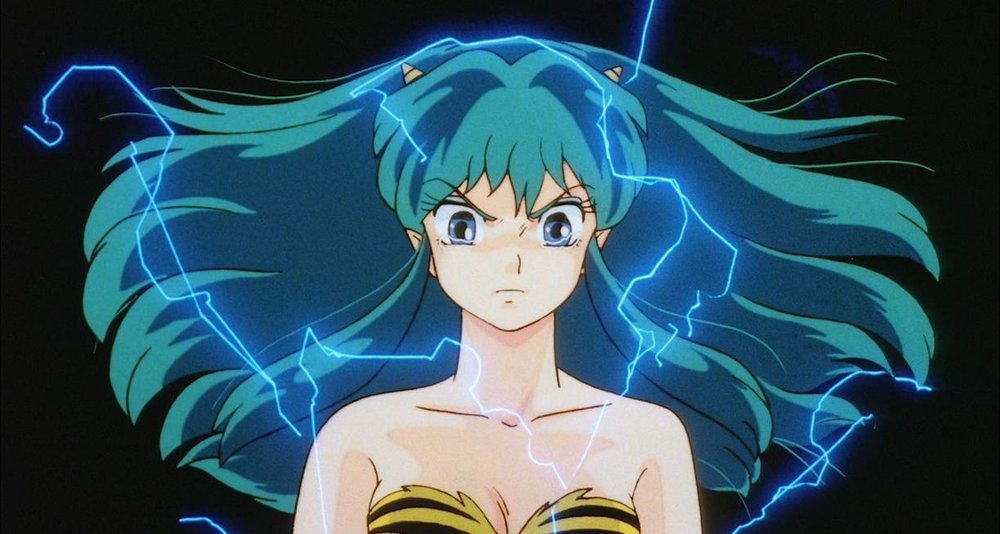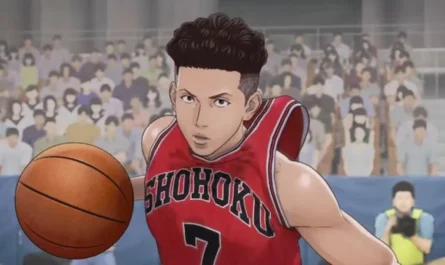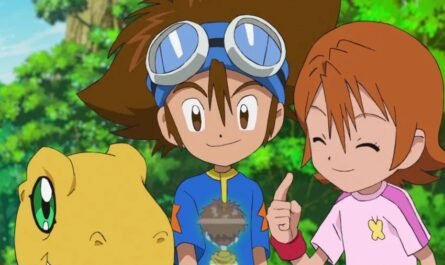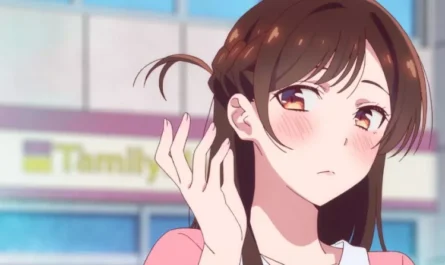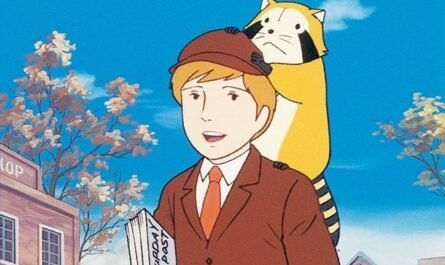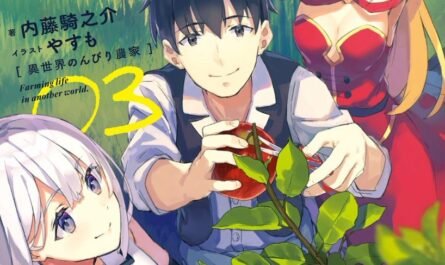On New Year’s Day 2022, I was amazed at the news all over Japan. That “Urusei Yatsura” will be broadcast as a new animation. This work was posted on TV animation about 40 years ago, and this time the voice actor will also be renewed. Rumiko Takahashi, the creator of the original manga and who has produced hits such as “Ranma 1/2” and “Inuyasha” in addition to “Urusei Yatsura”, told the secret story of the production of “Urusei Yatsura” and the new animation. I heard about “MAO”, which is currently being serialized in “Weekly Shonen Sunday”.
Based on Yasutaka Tsutsui’s novel
Rumiko Takahashi will celebrate her 45th anniversary of painting next year. She continued to play an active role almost without interruption, and all her serialized works were big hits. She received the Medal with Purple Ribbon in 2020. When did she become interested in drawing her manga, Mr Takahashi?
She read manga magazines from an early age, and when she was in sixth grade, she remembers her name appearing on “Weekly Shonen Sunday” when she posted her first four-frame manga. She started drawing story manga when she was in her second year of high school, and when she made her debut in 1978, she was a college student. She loves reading, and the novel by Yasutaka Tsutsui significantly influenced her. The slapstick sci-fi element of Mr Tsutsui’s story is still at the root of my manga production.
That’s exactly what her first serialized work, “Urusei Yatsura”, is. A romantic comedy with a vital sci-fi element, in which many characters appear, centred on the alien Ram, when the main character, who loves girls, hits. This work, which caused a social phenomenon in manga and anime, will change voice actors and broadcast a new animation this year. What did you think of the original author when you heard it?
I was surprised that “I’m going to do it now!” I was happy to feel the existence of people working on broadcasting the work over 40 years ago as a new animation. When I read the scenario, it was more interesting than I expected. I felt that “this seems to be enjoyable for both those who watched anime in the past and those who are starting to watch it anew”, and I became more and more excited about the broadcast.
Regarding changing the voice actors, the people who played the main characters are still active, so we are welcome to continue casting, but the voice actors’ descriptions and the story have been renewed as “Urusei Yatsura from 2022”. I thought it would be good to do it. As many of you may already know, Hiroshi Kamiya and Sumire Uesaka are the ones. The voice actors, such as Shinobu and Mendo, who will be announced in the future, are gorgeous protagonists. Many viewers will be surprised by the end rolls, so please look forward to the announcement.
Lamb’s “Dacha” is a dialect of Sendai! ??
Is there a draft for “Urusei Yatsura”?
Before my debut, I attended Kazuo Koike’s famous manga story writer, Kazuo Koike’s Drama Village School, and had the task of submitting a story scenario once a week. When the first serialization was decided, I thought, “let’s use one of the scenarios”, and that was the original draft of the first episode of “Urusei Yatsura”. The result is a manga that puts everything I want to draw. For example, science fiction, slapstick gag, and school things are closely related to daily life. The world of “Urusei Yatsura” is anything.
How did you set the characters?
First of all, the main character. I gave my name to the editor seven times and became a character who loves women. Shinobu, a heroine in the early stages, wanted to make the normality of the hit stand out, so I made it a general high school girl, and Ram was an invader from space, and the image of the character design was like thunder.
That’s why you’re wearing a tiger-patterned bikini. Besides, Lamb’s way of speaking “-dacha” is now world-famous.
When I thought about the individuality of how to speak, I remembered the youth novel “Aoba Shigeru” (Hisashi Inoue / Bungei Shunju) set in Sendai. Also, the aliens in my debut work “Katte na Yatsura” used the Chiba dialect “-Dapya” and were similar to the Sendai dialect, so let’s make Ram’s way of speaking identical to that dialect. I decided.
Initially, “Urusei Yatsura” was serialized in 5 episodes, and Ram was scheduled to appear only in the 1st episode. It became the axis of the story series. It wasn’t until the end of the series that I learned it was a big hit. Readers loved all three, and when I heard that “many people are wondering what this love triangle will be like,” and when the long-term serialization was decided, Ram would also appear in the series.
Why did the heroine change from Shinobu to Ram?
Because I emphasized that the main character was the heroine rather than the heroine, I wasn’t thinking about which one would be a couple. Lamb naturally became the heroine’s standing position during the serialization. The turning point may be Mendo, a new character from the long-term serialization. Although it is handsome, it is strange that the surroundings do not react, so I added a depiction that Shinobu is attracted to Mendo.
The work of a cartoonist is fun
Mr. Takahashi also started serializing the romance manga “Maison Ikkoku” in the middle of “Urusei Yatsura”. Wasn’t it challenging to serialize at the same time?
Because I was still in my twenties, it wasn’t impossible to get tired, I didn’t feel drowsiness or stiff shoulders, and the work of the manga artist was fun and exciting.
What was the deciding factor for the completion of “Urusei Yatsura”?
This is Shinobu. As the story progressed, Ram became like a couple and began to think about how to make Shinobu happy. Then I came up with an episode in which Ataru, Ram, and Shinobu find many future doors in a parallel world. I felt that “I could see a bright future for Shinobu,” and decided to complete “Urusei Yatsura.” All the characters were happy, and the ending was such that the reader was “good to read”.
The same was true for “Ranma 1/2,” which started after completing “Urusei Yatsura.” The main character, Ranma, is set to become a woman when she wears water, and there are gags and battles, and it is impressive that there was an extended episode of two volumes or more.
“Ranma 1/2” was able to use spreads and large frames. It is sometimes said that Ranma’s daughter-in-law, Akane, resembles Urusei Yatsura’s Shinobu. Still, she has nothing to do with Shinobu because she is the heroine she has decided while writing her name. She naturally becomes a character with similar characters in other works, but I’ve never dared to connect them.
In addition, a serious “Mermaid” series depicting the hero’s journey who has become immortal, “Inuyasha”, where a junior high school girl who slipped back in time during the Warring States period meets and travels to Inuyasha, a god of death. The school comedy “Rinne of the Boundary” by the inspired girl and Mr Takahashi’s serialized manga always hit, and almost all of them have been animated.
I always put all my energy into the work being serialized, and I started thinking about the content of the new serialization after it was completed. We haven’t decided how the story will end. However, I always want to finish it in a way that readers want to read it over and over again.
It is often asked, “Is it difficult to create new works more and more?”, But I am very grateful that there is a place to draw manga by creating a new serialization frame every time it is completed. The enthusiasm for manga production hasn’t changed since its debut. I’ve been drawing by hand all the time.
The introductory part is essential in every episode.
Currently, “MAO” is being serialized in “Weekly Shonen Sunday”. The heroine who lives in the present age makes a time slip in the Taisho era, meets Mao, an onmyoji, and fights to solve the mystery.
The know-how cultivated in “Urusei Yatsura” to make readers feel the good tempo is also alive in “MAO”. For example, after drawing one frame in “Urusei Yatsura”, I was worried for a few days without proceeding to the subsequent development. When I took the plunge and deleted the frame, the story started to move in a different direction. By accumulating such experiences, I have improved my composition, and now I don’t have to stop and worry while drawing.
What is the specific power of composition?
I value the introductory part that determines whether the reader can read the continuation of any manga episode. Usually, the first seven pieces, and in the case of a short attack such as “Urusei Yatsura”, the first few pieces correspond to it. After that, something was happening up to the 0th sheet, and the structure of the manga that the situation changed at the 0th sheet and got excited toward the last was clinging to me. While I’m drawing, I feel that it’s about time.
In my serialization, “Inuyasha” was a relatively tense story, but “MAO” has a darker atmosphere. I have a vital mystery element, and while being aware of female readers, I have put out a lot of male characters that I think are “cool” because I am also a woman. Many mysteries have not been clarified yet, and it is a work with a vital mystery element.
Also, female characters tend to be too close to fantasy if their skin is overexposed like a lamb, so they wear uniforms, kimonos, and clothes from the Taisho era.
It’s also a work where you can feel the difference between Taisho and Reiwa regarding wording and actions.
Since I was a child, I felt that the language of women in the Taisho and early Showa eras was beautiful. People living in the Taisho era speak the language appropriate for the times, and Reiwa’s high school student, Nanohana, speaks the modern youth language. The point of being conscious of words also applies to the Ram of “Urusei Yatsura”.
What are your plans for the future?
Now I want to do my best to draw “MAO”. Up to 12 volumes are on sale, so please read them. Also, the one-shot manga “Rumiko Takahashi” is posted in the 8th issue of “Big Comic Original”, released on April 5, so please pick it up if you like.
The anime “Urusei Yatsura” will start broadcasting later this year, so I hope it will make people who have troubles at work, school, and in daily life laugh without thinking about anything and make their hearts easier. Various news will be announced in the future, so I hope you will look forward to the follow-up news.
Profile of Rumiko Takahashi
Manga artist. She made her debut in 1978 with “Katte na Yatsura”. Since then, she has been active on the front lines for over 40 years, mainly in shōnen manga magazines. In 1981, she won the 26th Shogakukan Manga Award for Boys and the 18th Seiun Award for Comic in 1987 for “Urusei Yatsura”. In 1989 she won the 20th Seiun Award Comic Category for “Mermaid Forest” and the 47th Shogakukan Manga Award Boys Category for “Inuyasha” in 2002. She also has many hits, such as “Maison Ikkoku” and “Ranma 1/2”, and most of her serialized works have been made into TV animation. She received the Medal with Purple Ribbon for 20 years. She is currently serializing “MAO” in “Weekly Shonen Sunday”.

